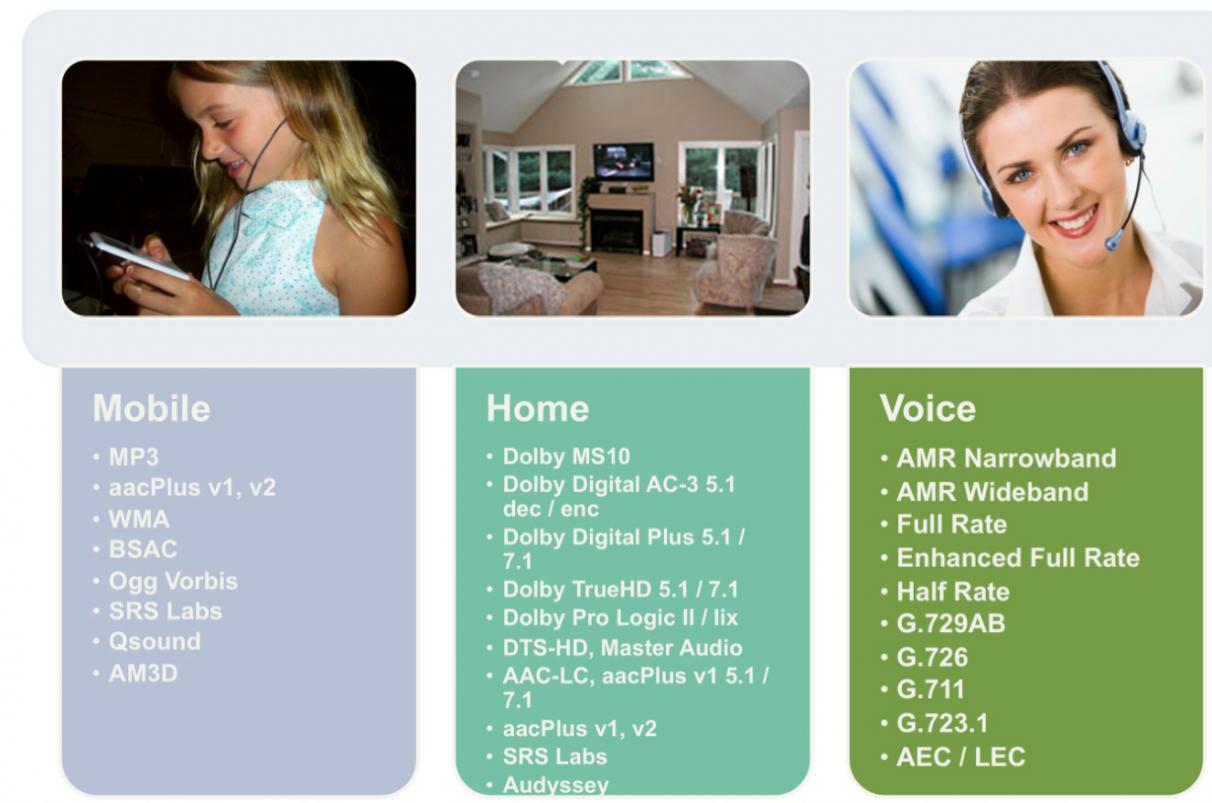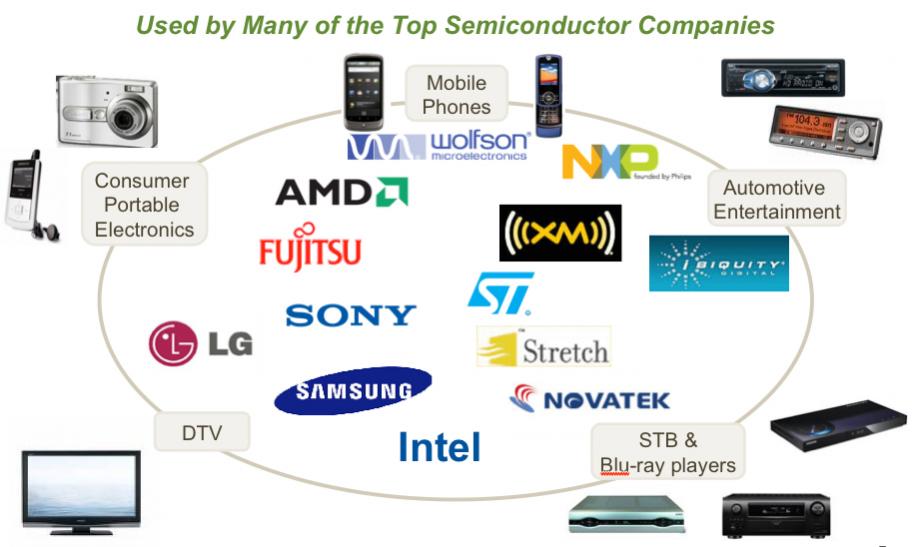 The big challenge with audio is that there are so many standards. Some of this is for historical reasons since audio for mobile (such as mp3), for the home (Dolby 5.1) and for cell-phone voice encoding/decoding have all had very different requirements, different standard setters and so on. But gradually everything is coming together. You will expect your smartphone to be able to play a movie with the same DTS sound your BluRay can provide.
The big challenge with audio is that there are so many standards. Some of this is for historical reasons since audio for mobile (such as mp3), for the home (Dolby 5.1) and for cell-phone voice encoding/decoding have all had very different requirements, different standard setters and so on. But gradually everything is coming together. You will expect your smartphone to be able to play a movie with the same DTS sound your BluRay can provide.
The proliferation (and constant change) of standards has been an opportunity for Tensilica whose HiFi product line has become the standard for many semiconductor and system companies. By designing a custom audio processor and then supplying software for each standard, it is fairly easy to support any portfolio of standards and even be able to change the code as standards evolve, possibly even being able to update devices after they are in the customers’ hands.
The technical challenge for any audio solution is to get the lowest MACs/W/area/price which translates into designing a small processor that can implement the audio standards of interest at the lowest possible clock frequency. Power is a big driver since a lot of audio is either in portable devices (battery) or living room devices (no fans). The obvious solution of just running code on the ARM processor that is (probably) already on the chip is too power hungry. Building an optimal sillicon hardware implementation is too expensive both in design time and area (if different standards require different dedicated silicon).
 HiFi 2 is a DSP with dual 24-bit MACs. HiFi EP is a version with improved memory and other optimizations. This week at CES Tensillica is announcing HiFi 3 which is a quad-mac solution which can be configured either as dual 32-bit MACs or as 4 24-bit MACs or some other configurations. The hardware is 3-slot VLIW processor, issuing 3 instructions on each clock cycle. The improvements are large. For example, a 32-tap FIR takes 2090 cycles on HiFi EP but only 997 on HiFi 3, less than half. DTS processing for movie sound needed 362MHz with HiFi 2 but only 233 MHz with HiFi 3.
HiFi 2 is a DSP with dual 24-bit MACs. HiFi EP is a version with improved memory and other optimizations. This week at CES Tensillica is announcing HiFi 3 which is a quad-mac solution which can be configured either as dual 32-bit MACs or as 4 24-bit MACs or some other configurations. The hardware is 3-slot VLIW processor, issuing 3 instructions on each clock cycle. The improvements are large. For example, a 32-tap FIR takes 2090 cycles on HiFi EP but only 997 on HiFi 3, less than half. DTS processing for movie sound needed 362MHz with HiFi 2 but only 233 MHz with HiFi 3.
HiFi 3 is source compatible with HiFi 2 codecs and even has a little performance improvement, maybe 10%. But by updating the code to take better advantage of HiFi 3’s capabilities a typical codec is improved by over 20%.
HiFi 3 will enable more post processing of home entertainment, for example matching the processing to the room and speaker environment. Similarly smartphones will require much more complex audio for immersive gaming experience. On the voice coding, the requirement are actually outpacing what even Moore’s law can deliver, requiring increasing processing to deliver better noise suppression, noise dependent volume control and so on.





TSMC N3 Process Technology Wiki